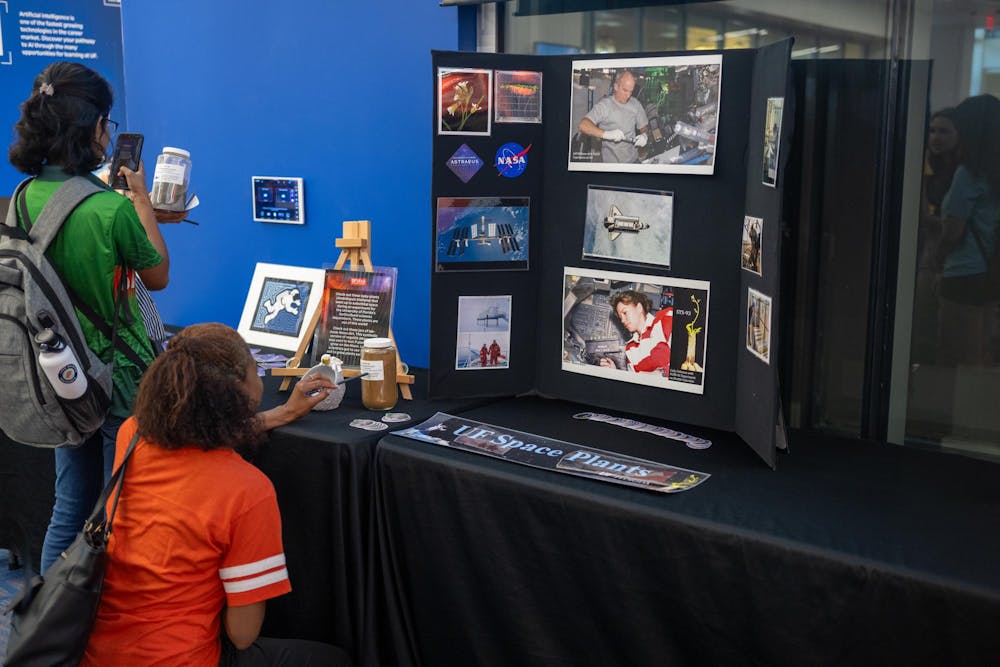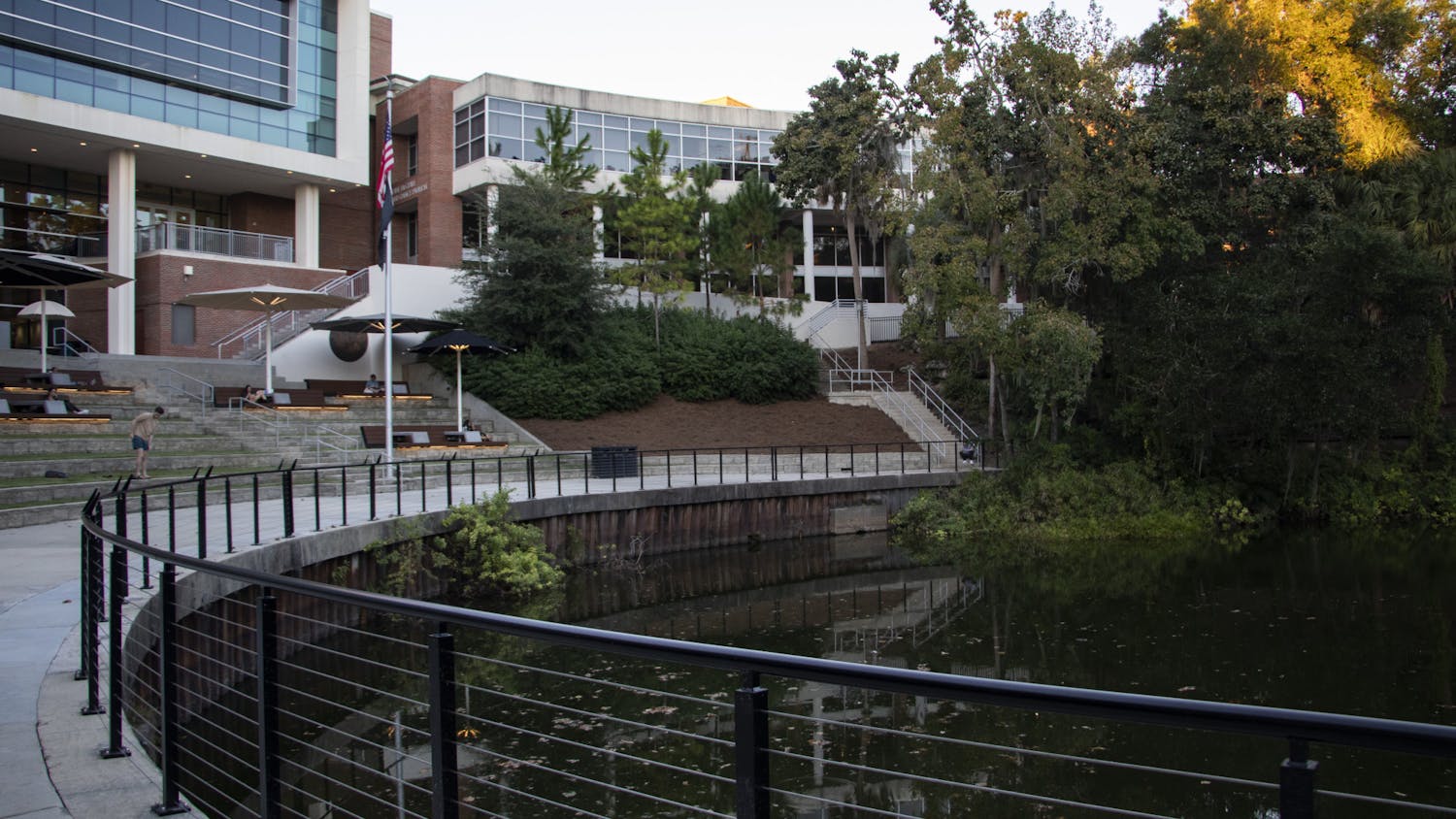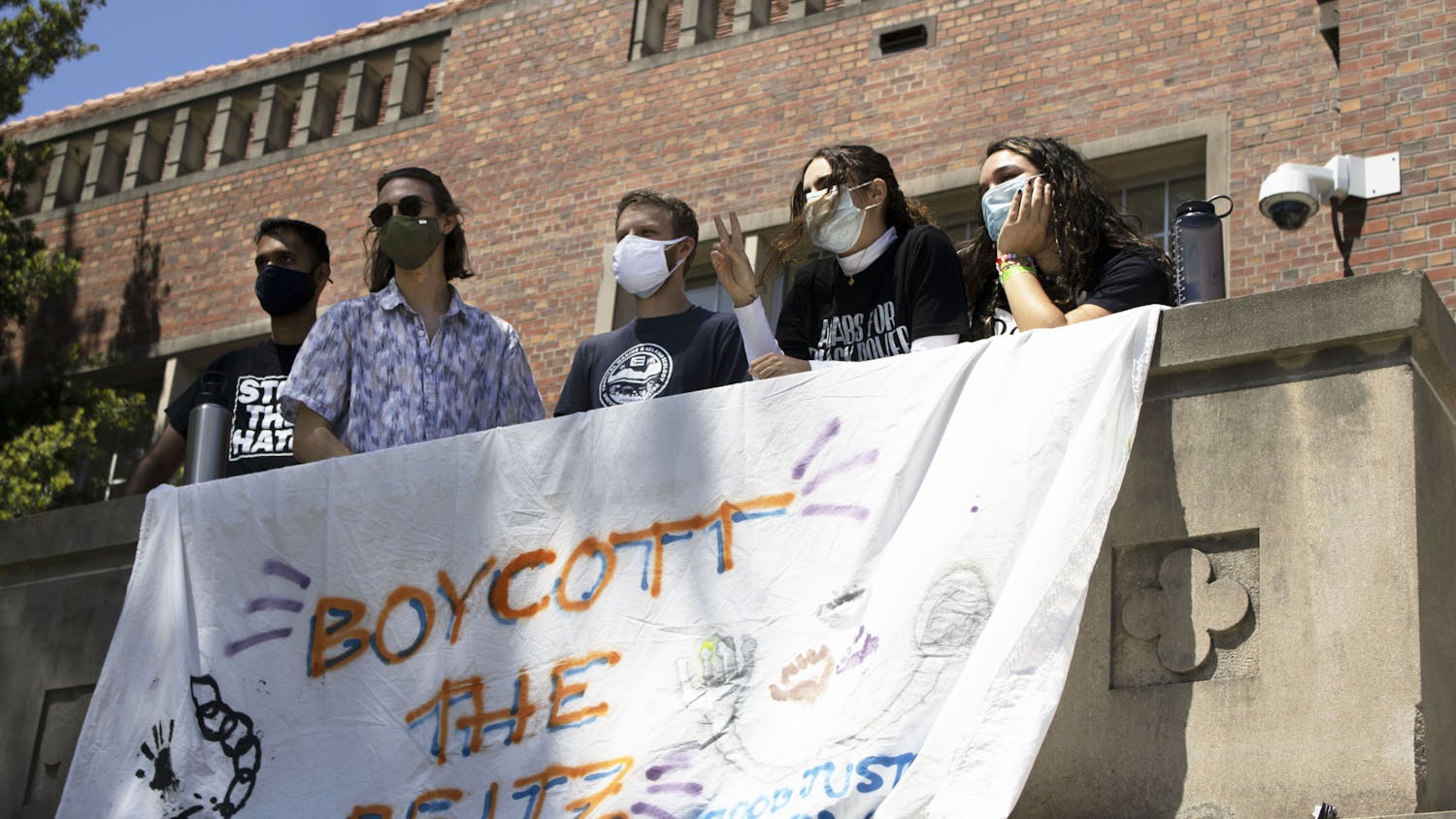The crowd held its breath as students, faculty and staff watched UF horticultural sciences professor Rob Ferl launch into space as a part of the Blue Origin New Shepard mission.
A watch party of about 200 people at the J. Wayne Reitz Student Union buzzed with excitement as attendees counted down the minutes to Ferl’s 9 a.m. launch.
“There’s something to be said about first-hand experience,” Ferl told UF News last week. “The experiment is enriched when a human mind and a human brain go with it.”
Ferl became the first NASA-funded university researcher to conduct his own cosmic experiment in the New Shepard rocket.
This mission represents a broader aspiration outside the UF community to push the boundaries of scientific research, a sentiment UF President Kent Fuchs echoed in a statement to UF News.
“This moment is a milestone not just for the University of Florida and the Astraeus Space Institute but for an entire community of scientists who can now consider experiments in space that might have previously been viewed as impossible,” Fuchs said.
Since joining UF in 2006 as the director of the Interdisciplinary Center for Biotechnology Research, Ferl has been at the forefront of space biology. UF’s Astraeus Space Institute has credited him with significantly advancing its understanding of how organisms can survive in and respond to microgravity.
Ferl velcroed plants in specialized tubes to his legs to observe their real-time response to the different stages of space travel.
Seeing a faculty member embark on such a journey made the event all the more personal and inspiring for Nikhil Patel, a 20-year-old UF biotechnology junior.
“It's definitely really cool to see someone that I have meetings with going to space,” said Patel, who volunteers at the Space Plants lab.
The launch also brought together a diverse group of students across disciplines. Elizabeth Gadsby, part-time faculty in microbiology and cell science, noted journalism, math, science, engineering, business and math majors in the room.
“All of [these] different disciplines that can be excited about this and come together as the Gator Nation,” she said.
The round trip, barely 12 minutes long, lifted off in west Texas at 9:07 a.m. EDT and came back to Earth for touchdown at 9:19 a.m. The spacecraft reached a maximum altitude of 341,000 feet.
The sense of pride was palpable among the attendees, including Francesca Barbieri, a second-year doctoral student in the Precision Space Systems Laboratory.
“It's something to kind of brag about,” Barbieri said. “I'm an international student, and something like this is very unlikely to happen back home.”
As of 2024, Barbieri’s home country, Italy, has only sent 12 astronauts to space.
The significance of Ferl’s mission wasn’t lost on the faculty either. Kira Champo, a biological scientist at UF’s space plants lab and an alumna of the Plant Science program, described the mission as “larger than life.”
“It's pretty incredible that something like this is happening,” Champo said.
For the UF community, Ferl’s mission represents more than just an academic achievement; it is a source of pride and inspiration.
“There is something special, magical about rockets and launching into space that attracts all of us to it, and we feel like we can live it through Professor Ferl, kind of vicariously,” Fuchs told UF News.
His words capture the collective sense of wonder and excitement that permeated the launch party, as students, faculty, and staff watched Ferl’s journey unfold in real-time.
Contact Vera Lucia Pappaterra at vpappaterra@alligator.org. Follow her on X @veralupap.
Vera Lucia Pappaterra is the enterprise race and equity reporter and a second-year journalism major. She has previously worked on the university desk as the university general assignment reporter. In her free time, she enjoys deadlifting 155 lbs. and telling everyone about it.





